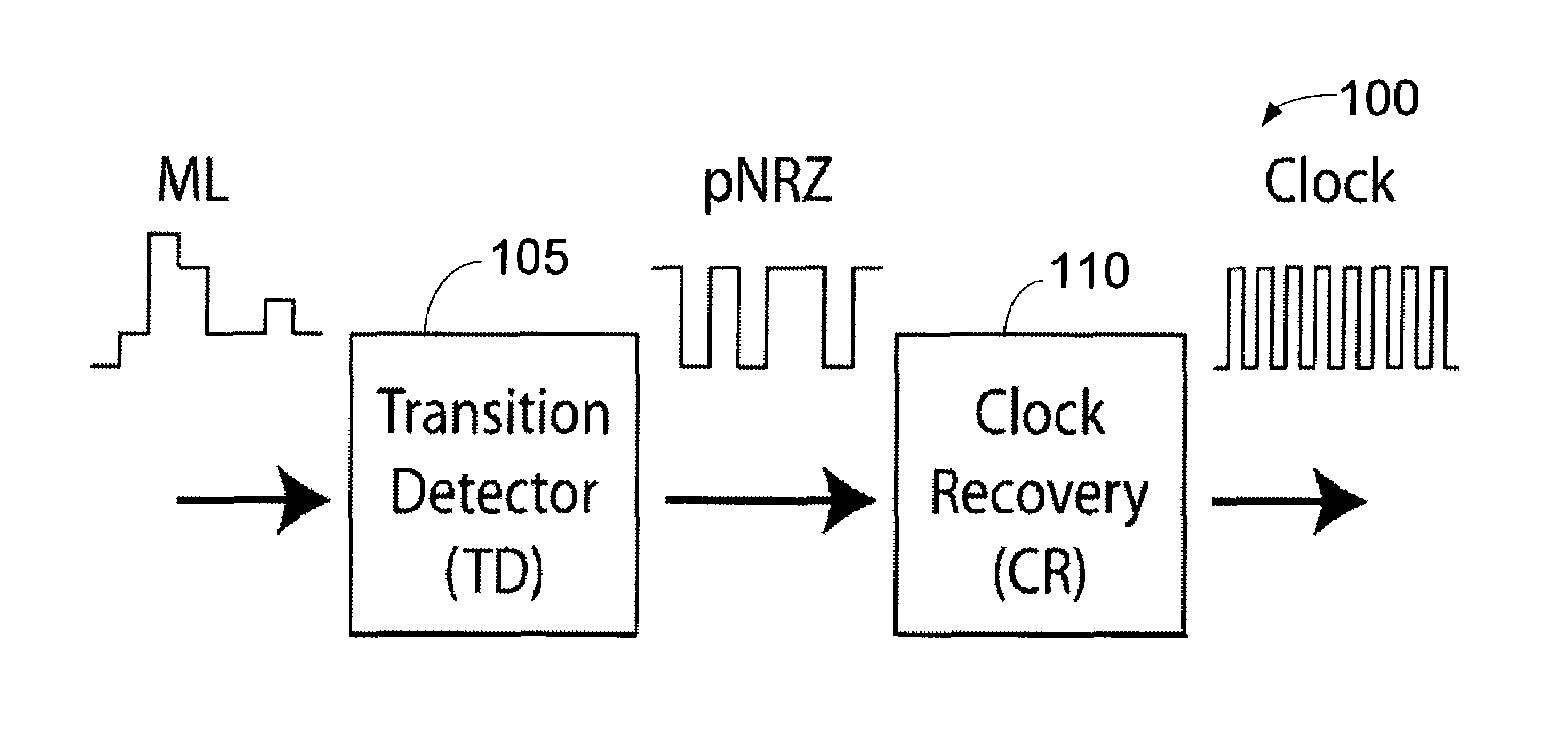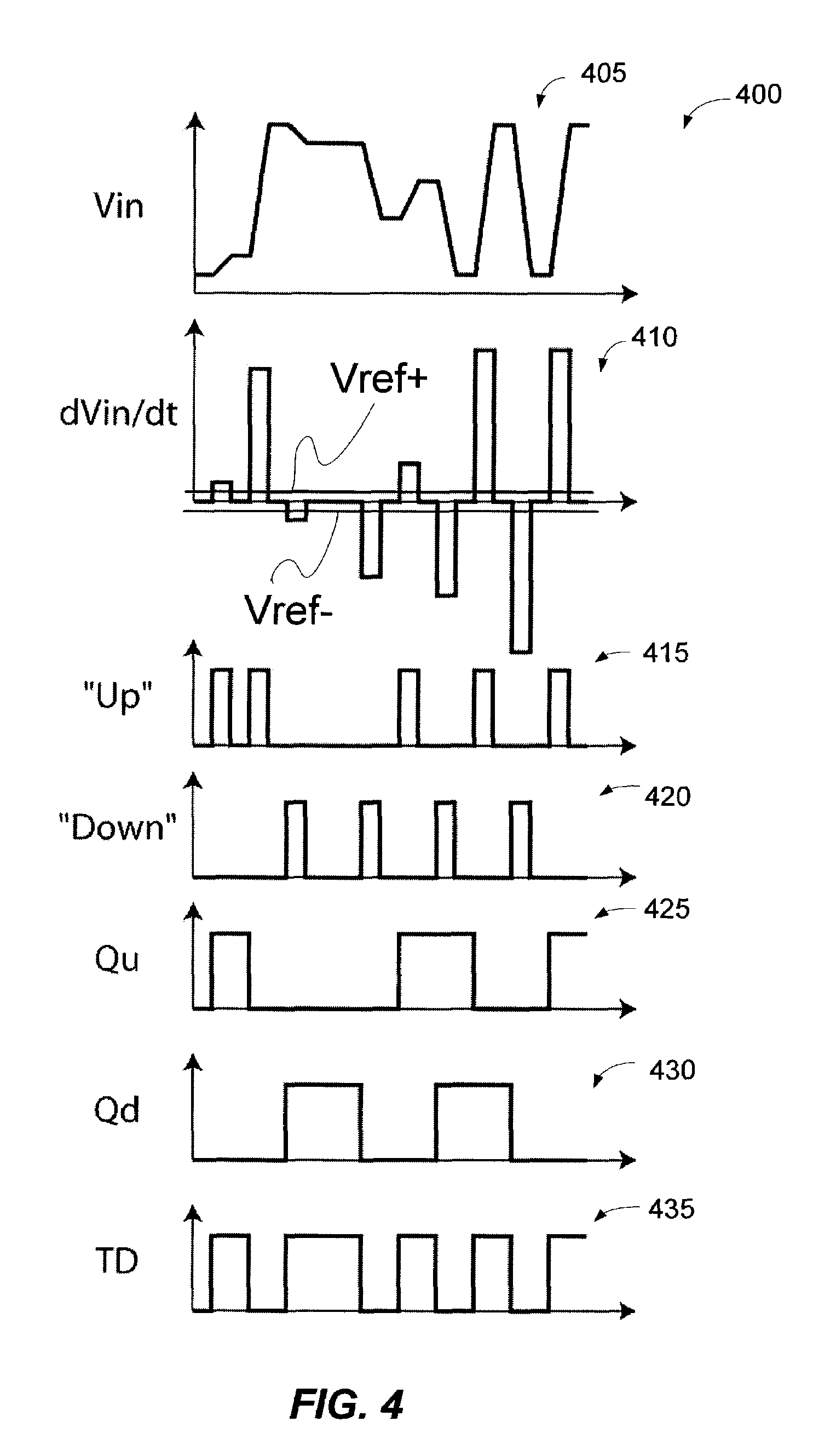Multi-level signal clock recovery technique
a multi-level signal and clock recovery technology, applied in pulse technique, dc level restoring means or bias distort correction, baseband system details, etc., can solve the problems of difficult clock recovery of the resulting complex waveform, unit inutility in high speed communication environment, and usually does not detect a high percentage of transitions
- Summary
- Abstract
- Description
- Claims
- Application Information
AI Technical Summary
Benefits of technology
Problems solved by technology
Method used
Image
Examples
Embodiment Construction
[0036]Clock recovery of a multi-level (ML) signal can be performed in a two-step process. First, the transitions within the ML signal can be detected by a novel transition detector (TD). And second, the output of the TD circuit can comprise a pseudo-non-return-to-zero (pNRZ) signal that can drive a conventional OOK clock recovery (CR) IC. The TD circuit can convert the edges of the ML signal into the pseudo-NRZ (pNRZ) signal. The TD circuit can capture as many transitions as possible to allow the conventional NRZ clock recovery (CR) chip to optimally perform. The TD circuit can differentiate the ML signal in order to detect the ML signal's transitions.
[0037]An exemplary transition detection circuit has been built by the inventors and simulated to operate at 2.7 Giga Symbols per second (Gsym / sec) in a Gallium Arsenide (GaAs) heterojunction bi-polar transistor (HBT) process. In other words, the inventors have fabricated a working model of the present invention. The present invention c...
PUM
 Login to View More
Login to View More Abstract
Description
Claims
Application Information
 Login to View More
Login to View More - R&D
- Intellectual Property
- Life Sciences
- Materials
- Tech Scout
- Unparalleled Data Quality
- Higher Quality Content
- 60% Fewer Hallucinations
Browse by: Latest US Patents, China's latest patents, Technical Efficacy Thesaurus, Application Domain, Technology Topic, Popular Technical Reports.
© 2025 PatSnap. All rights reserved.Legal|Privacy policy|Modern Slavery Act Transparency Statement|Sitemap|About US| Contact US: help@patsnap.com



